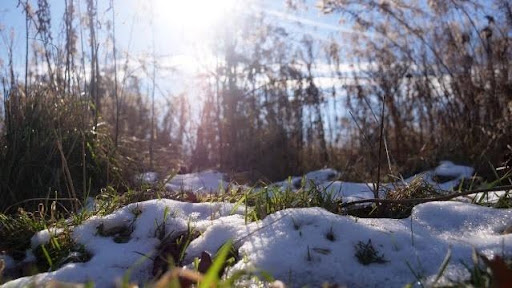Each year when warm temperatures start to bring signs of spring, it is also a time of year to pay attention to how the snow melt and increases in rain can affect our land and water. Spring runoff and rain events are significant topics for conservation in Wisconsin due to the state’s unique geography and climate. During the spring, melting snow combined with heavy rainfall can result in rapid runoff, which can have several environmental impacts. Water quality, soil erosion, flooding, and groundwater recharge are all important factors to keep in mind when observing the weather events that occur each spring. Increased runoff and rainfall can alter stream flows, temperature, and sediment levels, all of which can disrupt the spawning cycles of fish and other aquatic species, particularly those sensitive to environmental changes like trout and other cold-water species. Spring runoff often causes excess nutrients like nitrogen and phosphorus to enter our rivers, lakes, and wetlands. These nutrients can cause eutrophication. Eutrophication is a process that occurs when a body of water receives too many nutrients, which can lead to algae overgrowth, fish kills, and other ecological problems, primarily noticed during the late summer when water temperatures climb. Water quality can be affected by both this nutrient pollution and sediment pollution. In order to combat these issues, practices can be done on your own property to help mitigate erosion and water quality issues. Installing vegetated buffer zones along rivers and lakes help to filter out pollutants before they enter water bodies as well as stop erosion waterward, because of the dense and deep root systems that native plants create. Another practice you could do to help our environment is to install rain gardens in you yard. Rain gardens are vegetated depressions on your property designed to catch storm water and reduce runoff. In more severe cases, streambank restoration techniques like adding rocks or structures to slow down the flow can be used to protect against erosion. Flooding is another major concern in our county each spring. Timing of heavy rains along with a large amount of existing snow and the right temperatures can easily cause flooding. Flooding can cause damage to infrastructure like culverts on local roads, and erosion on stream banks and shorelines. Flooding demonstrates why we should appreciate and restore our wetlands. Wetlands act as a natural sponge that absorb excess water during these rain and snowmelt events. While spring runoff can recharge groundwater supplies, it can also carry contaminants into aquifers. In Wisconsin, this is of particular concern for agricultural runoff, which may carry pesticides and fertilizers into drinking water supplies. This may not be as big of a concern in our county due to the lack of agriculture and composition of soils, in comparison to many other counties in Wisconsin. Either way, it is important to be aware of the weather and the affects that water can have on our landscape this time of year.
For more information contact Kayla Littleton, Forest County Land Conservation and Land Information Director at 715-478-1387 or by e-mail at .

